You are passionate about traveling and want to share your stories and journey with the world.
But there is a problem…
You work tirelessly to write great content, to practice your craft. Maybe you have a small following, or even a larger following, but you just aren’t pulling in enough dollars from blogging to sustain a regular travel lifestyle.
In fact, many travel bloggers quit as soon as their trip ends, or after a year or two of blogging from home… Unless their blog is making money. If it’s making enough money, like the contributors below, then travel freedom never has to end.
I approached this article with the view to picking out 18 travel bloggers (now 19) who have each monetized in a specific way. So instead of reading 18 overlapping methods, you’ll find 18 unique strategies, each with actionable tips that you can start applying today.
Before we get to the 18 methods, I want to reply to some of the common questions and concerns I’ve heard while researching blog monetization since we started our podcast on the topic in January 2015.
New bloggers can’t / shouldn’t monetize?
I’ve seen this myth peddled around. That you will somehow undermine your credibility by earning a living.
But, the idea you must form a loyal community before you start monetizing, is simply one option. Not the only option.
If you establish from day one that your travel blog is “in business”, you will not alienate everyone. In fact, you will establish expectations. So, if you do try to sell something, your audience is not shocked and upset.
That said, if you prefer to focus on indirect monetization, you may never have to “sell” anything to your audience. I withhold judgement on which method is best. Both get results, if actioned correctly, as you’ll see below.
Importantly, many of the bloggers on this list were making money in less than a year after launching. I was too. More on that in a minute.
But, of the longer term bloggers on this list, who took time to make money, here is the difference. They were pioneers. They had to test the market. Grow the industry. Use trial and error to discover what worked and what didn’t. Teach companies what blogging is and why they should work with us.
But now, there are proven strategies in blogging and we have a lot of role models to learn from to help us emulate, personalise and even improve those models.
The successful models of bloggers who started in 2007, 2009 or 2011 can now be applied from day one. Significantly cutting down the time it takes to get traffic and start monetizing. You can build a sustainable blog but still monetize the right way. Offering real value as well as earning while you do.
Sure, the biggest blogs may make way more money than you will in your first year of monetization. Our goal is for you to make some money. To be on route to the income you want. So long as you have the financial incentive to fund your travels, then you will gain the motivation to strive for the big bucks, to never give up.
The evolution of knowledge is such that what once was a life’s work for Galileo is now known to every high schooler who cares to listen in class. Online business is the same. And travel blogging for money can be a business from day one. This doesn’t mean alienating your audience through hard sells, it means politely integrating monetization and establishing that you are a business, not just a free diary of tips. It means setting expectations and doing it right from the start.
We are privileged to be able to learn from the mistakes and successes of the pioneers, so we can excel quicker.
Monetizing our travel blog after 6 months saved us from going home
We (Tommo & Megsy) launched our first professional travel blog (http://foodfuntravel.com) in December 2012. It was a steep learning curve, but we started monetizing by June 2013. It wasn’t a lot of money, but it gave us inspiration that WE could do this. That it wasn’t just a pipe dream for top few travel bloggers. There is still a piece of the pie for everyone, if you know where to cut…
Your first serving of pie is going to be small. Ours certainly was. In August 2013, with just a 7,000 page views a month blog, we had made our first $100 (Amazon affiliates & 1 ebook), and were even pitching companies (Learn more about how we pitch companies), for substantial discounts on experiences in return for our writing articles.
Now, we make enough income to continue traveling full time. Or at least, to choose where we want to be, which is currently Georgia where we are holed up for 2020 weathering out the COVID pandemic and building some local businesses while we can’t travel, such as ExpatHub, a service business for Expats living in, or relocating to, The Republic of Georgia.
Are we part of the travel blog elite yet? Not quite. But we are making progress, and because we monetized early, our trip lasted a lot longer and allowed us more time to work on our business. Having time is key, because it actually takes a lot of work.
Sorry if you thought it would be easy!
Our savings were budgeted to run out in December 2014, instead they dwindled but never really ran out, some months we withdraw, some months we pay back in. Income can fluctuate while you grow your business but we strive every day to add and promote more stable income streams (like affiliates sales and ebooks) as a foundation to offset our more variable income (which is mainly freelance writing and sponsorships)
If we had not monetized early on, we’d never have made it to the bigger income we have now. We’d have run out of time in 2014 and had to go home, or take an English teaching job. We’d be just another forgotten blog that died. Instead, our income, traffic and exposure grows every month.
Still, we are not contributors below. We are doing well, but we wanted to feature some top experts to tell you the absolute best knowledge on each travel blog monetization topic.
Can you earn $19,000 in your first year travel blogging?
If you’ve been blogging for a year already you may be screaming “No!”
But, I’ve got a case study to prove you wrong.
Instead of only featuring the biggest names, we wanted to feature some of the up and comers who have proven that big monetization is not just for the big guns.
One of the contributors below is “My Tan Feet”. Their story really inspired me and pushed our own blog forward. They prove that monetizing from day one can work and be sustainable. Launching in mid-2013, their first annual income report was as follows:
– $19365 in cash
– $2550 in free travel gear
– $9000 in free travel activities (Tours, Hotels, Restaurants, etc)
More than enough for any budget traveler to keep traveling forever (Learn how our first 2 years on the road cost just $22 per day)
Were they after a quick buck? Were they burning their reputation with spammy ads just to make money? No. By the time they released their August 2015 income report, their monthly income had grown to over $6,000. All that in about 2 years.
They help people. That’s really important. But they make money doing it…
I don’t have space for a full case study here (You can listen to our podcast interview with My Tan Feet if you like), but it should be noted, they set out with a clear goal and a definite niche. They did solid SEO to pull in traffic. They worked tirelessly to focus on one thing: Costa Rica. Rather than competing with the general travel blogs who were already established, they became an authority on one topic.
We are going to go into a lot more detail about business models that work for travel bloggers in our Travel Blog Monetization Course and Travel Blog Monetization Virtual Summit
The online course features 15+ blog and travel industry experts talking monetization. Focusing primarily on Branding, Affiliate Sales, SEO, Freelance Travel Writing, Sponsorship and how to land your first Paid Campaigns, you can learn how to turn your travel blog into a thriving business from experts who are really doing it., Also have instant access to our private facebook group where you can chat money with other serious bloggers, and lots more.
We’ll be covering in practical and actionable terms, the key reasons behind why strategies like those below work and how you can implement them. This event is a world first in the travel blog industry and will be featuring some of the most successful bloggers out there.
You can get your first 10 lessons FREE by clicking the button below and getting instant access to our FREE MEMBERS AREA
Not sure you want to register? Read about exactly what sort of content we are providing that will have you seeing improvements in your blogs performance almost immediately.
18 Travel Blog Monetization Techniques
The lines between direct and indirect travel blog monetization are sometimes blurred. But I’ve tried to distinguish between the two as best I can.
Direct Monetization for Travel Blogs
I consider direct monetization to be where you are directly making money on your blog. This could include affiliate links, selling your ebook or posting content you are paid to write.
Affiliate Marketing

Sharon Gourlay – www.wheressharon.com
My favourite blog monetisation method, and the one that works best for me, is affiliate marketing. I love earning money from affiliates as, once I have written the post and inserted the links, it is largely hands off and becomes a mostly passive way to earn money.
To earn money through affiliate marketing, you need to sign up for affiliate programs, such as through a hotel booking website or Amazon then insert your special links into your articles. If a reader then clicks on one of these links and makes a purchase, you earn a commission.
Although the basic implementation is simple, the more difficult part is ensuing that you don’t just do the “affiliate” part of “affiliate marketing”, but also the “marketing”. Just adding links to random articles will probably not earn you much – you need to have a relevant audience to your article and one that will want to click on your links. It’s hard to make much money from affiliates unless you have a marketing strategy which does this.
I personally use SEO for this – looking for keywords in Google that I think I can rank for and will give me a relevant audience. You don’t need much traffic, but you do need relevant traffic.
Sharon Gourlay writes all about how she earns a full time income from her travel blog at digitalnomadwannabe.com.
Create your own Physical Product
As bloggers we have something that every brand wants—an audience. The key is figuring out how to turn your fans (and their friends and family) into customers. There are countless ways to do this, but for us, the method we’ve had the most success with is selling our own physical product, the Speakeasy Travel Scarf.
By using our travel blog, Beers and Beans, as the foundation, we were able to convert our readership into customers as well as connect with media outlets and other bloggers for press mentions since we have a strong reputation in the travel space.
For anyone interested in selling their own physical product, it’s important to find an item that not only resonates with your community, but also helps them solve a problem.
Beth and Randy from Beers and Beans want to help you travel better. Their blog is all about providing inspiration for your own journeys no matter how big or small. Our preferred travel style is to go slow and bring Chachy, our little 10 pound hound! We also love volunteering on the road, especially at organic farms.
Build a travel website business you can sell
 Most of the six-figure bloggers and web publishers I know are not the ones that are highly visible on social media and topping “most popular travel blog” lists. Instead they’re meeting the needs of a specific tribe and collecting the checks that come from being focused.
Most of the six-figure bloggers and web publishers I know are not the ones that are highly visible on social media and topping “most popular travel blog” lists. Instead they’re meeting the needs of a specific tribe and collecting the checks that come from being focused.
Most importantly, they’re thinking like a publisher instead of a personality blogger and are building up an asset that can be sold. They’ve purposely put a clear editorial slant in place. They’ve built repeatable systems that have allowed them to expand by leveraging a team. The site is in a position that someone else could take over in a week or two if necessary–like after a sale.
This summer I sold one of my websites for the second time and this one netted me mid-five-figures. The sale generated enough money for a single person to live on for a year in the USA or two years in one of the places I featured in A Better Life for Half the Price. I was a little sad to see it go after working on it for six years, but that’s okay, I’ve got others. It was like selling one car out of a garage that had six of them. I’ve got one less thing to take care of now and I’ve got the equity in the bank.
This is a monetization strategy most bloggers aren’t focused on because they’re too busy talking about themselves and posting selfies. Instead of being focused inward, look for a market need that’s not being served and create a gathering place for that tribe or that segment. If you care a lot about something, others probably will too. Test it and see. Build a second site about that subject or place. Then maybe do it again for something else. Eventually you won’t just have a blog, you’ll have a portfolio of assets that are really worth something to a potential buyer.
Tim Leffel is a veteran travel writer, author, and publisher of five websites and blogs. His Cheapest Destinations Blog has been running since 2003 and the award-winning narrative publication Perceptive Travel is about to celebrate its 10th birthday. Watch for a second edition of his book Travel Writing 2.0.
Forming direct affiliate relationships
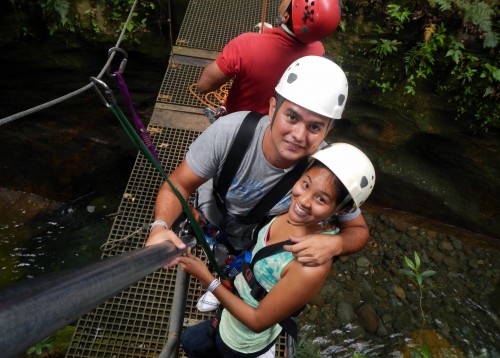 Affiliate marketing is a great way to make passive income and it is possible in the travel niche. However, affiliate sales and commissions for travel programs can be quite small, making cents off a booking.
Affiliate marketing is a great way to make passive income and it is possible in the travel niche. However, affiliate sales and commissions for travel programs can be quite small, making cents off a booking.
There are multiple programs to join for affiliate marketing such as Commission Junction and Share a Sale, or bloggers can sign up with the program itself such as Agoda or Hotelscombined. However, if you have a niche blog with specific traffic, there are ways you can make higher commissions if you work the company directly.
You may be surprised to find that some businesses already have their own affiliate program that pays much more than if you were to sell that same product on Amazon.
The most important thing is to recognize your niche and what you are an expert at, as these products or services need to be something you can sell and promote with trust to your readers. Then you need to pick which companies/businesses would be an excellent fit for your blog and create a pitch.
You need to formulate a pitch to show why you are a good fit for this company, your method for creating leads and conversions and how you and the company can benefit from this partnership.
Since our blog focuses on Costa Rica, we’ve created close partnership with companies and businesses in the tourism industry which give us a commission up to 15-20% for one sale (standard in Costa Rica). We make it a point to go beyond the 2 day hotel stay or 1 day tour by sending follow up emails, sitting down with the owner/manager to discuss options to create a long lasting relationship and formulating a business plan where we can both benefit.
The best tip is to start your own affiliate program like us is to establish a targeted audience first. You won’t convince any company if you don’t have a niche and if you don’t know who your target audience is. You need to show them that you have influence and that you can deliver or else why would they want to give you a higher commission not to mention work with you?
Samantha & Yeison blog at My Tan feet. They are one couple documenting their adventures and travels throughout Costa Rica and the rest of the world – and making money doing it.
E-books
Getting a simple ebook out is one of the easiest ways to earn your first income online and keep earning passive income ongoingly.
You can sell niche books as high ticketed items, directly on your blog with ebook check out systems such as gumroad or ganxy, if you can get the traffic.
But, with Amazon kindle (KDP) they do a lot of this leg work for you. You make less per sale than direct on your blog but Amazon put you in front of such a large audience that you will sell more volume. You even gain new readers for your blog who find you through your ebook.
You may have to sell your ebooks for the price of a coffee at first, but at least you can get results quickly which is reassuring when you’re first starting out. Here are my top 3 tips when looking to create an ebook.
Make sure your book topic is something that will sell well.
It’s smart to do some research before you start writing ebooks for Amazon Kindle. Go to the category you want to write for and check the sales ranking of the book ranked at number 1 and the book ranked at 100. If number one and number 100 are sales ranked both between 1,000 to 100,000 for all of Amazon, that’s a category that’s selling well. This can bring you in 200-600 US$ a month on a $3 ebook. More if your title knocks out a lot of the competitors.
Write up and create a good SEO title, description and ebook cover.
Writing your ebook might feel like you’ve just climbed a mountain but don’t fall at the last hurdle. Put some effort into creating the best use of keywords into the title and description. Use the whole word count space for both as Amazon customers will visit your ebook page and still may not be convinced, unless you sell the concept to them!. Use this space to drag them into the sale, use call to action texts, referrals of past readers. Go in depth about what the book contains. Tell them about yourself and your authority on the topic.
Reviews are important
Work hard at getting your first 10 reviews. Its essential to your ebook sales success. Contact people who follow you on social media, friends, other bloggers, people who are in forums that are related to your niche topic. Give them a free Amazon copy in return for an honest review. Your ebook will be on multiple Amazon stores around the world so focus on 10 reviews for other Amazon markets as well such as US, Canada and UK for example
TravelDave.co.uk @traveldaveuk – Dave Brett has Travelled to over 70+ countries, studied and lived in Finland, Wales and The Netherlands, worked and lived in Singapore, Switzerland and the USA and this has all been made possible by being frugal and sticking to a backpackers budget while monetizing online.
Run a Sponsored Competition
Running a competition takes a lot of time, but it is a smart technique for generating new social followers and making your readers feel great. To run a competition you will need time to set it up, promote it each day, and pick a winner. This is time that you should be paid for.
Most bloggers are happy to run a giveaway for free, however consider a minimum payment threshold of items to give away, and if that is not met, ask for payment.
The brand has approached you, because they want to reach your audience that you have worked so hard to build.
If you’re not sure where to start, take a look at Gleam, it makes setting up a competition a breeze.
Erin Bender blogs at Travel With Bender. Get expert tips for travel with kids as we uncover the best family holidays. Follow our family’s nomadic travels all over the world with 2 young children.
Direct Advertising – Done Differently
Trying to get paid from ad placements on a blog without tons of traffic can be a dead end. Most advertisers pay based on stats: page views, unique visitors, impressions, CPM (cost per thousand), and tend to lowball bloggers that don’t have big numbers.
And if you’re like me, you really don’t want to clutter up your beautiful blog and put up with pestering for peanuts. Also, it’s hard to compete with websites that play page view games (like those click-through galleries where the articles are photos captions). That said, there is an indirect way to earn more than 2k per month from direct advertising. By indirect, I mean don’t sell display ads the conventional way based on traffic numbers, but on conversion rates based on affiliate sales.
Here’s how it works for me. From backend affiliate tracking, I can prove that my readers are targeted, engaged, and actually buying stuff (earning me a six figure income for five years running). Merchant partners can see this, too. When merchants find effective affiliates, they often want to see their ads displayed on those websites.
But affiliate banners don’t convert as well as in-post links. (I don’t mess with Adsense either.) So when a few satisfied merchant partners asked me to feature their affiliate banners for free, I sent them my rate card, and quoted higher rates than conventional numbers could justify. The truth is I was trying to brush them off, but big surprise, they bit.
One merchant paid $2k per month for a year for an exclusive in their topic area.
Others have paid $600 to $900 a month for simple sidebar ads at a time when my blog drew fewer than 50k visitors per month, but I never had to share those stats because the quality of customer had already been established by backend affiliate tracking.
My number of sales per click pre-sold them.
By choice, I host only a few banner ads at a time, which keeps my site cleaner and is worth more to relevant advertisers. Now, if and when I approach merchants, I buck the trend by using numbers that present my blog’s real value in the best light.
Blogging for Bucks by Bucking the Advertising Trend:
- Start with targeted affiliate marketing. Find out which products convert best for your site and stick with those. Among other things, this will show you what your readers really want and what to spend your time writing about and promoting.
- Keep your blog focused. This helps readers know what to come back for, and helps potential advertisers see their place on your pages.
- Don’t post ads for free or cheap. Cheap advertisers can be high maintenance. And merchants with big bucks want their ads in classy neighborhoods.
- Approach your top partners first. When you start sending consistent affiliate sales, merchants will see value, regardless of conventional numbers. If they don’t approach you first, offer your top merchants premium uncluttered placement for an upcoming seasonal promo or special offer.
- Get testimonials. When merchant partners turned advertisers offer praise, ask them to put it in writing. This adds clout and builds your case for future opportunities.
Kathy Summers is an award-winning magazine writer, and the publisher of SavvyCities.com, a blog that helps people go out smarter in popular U.S. cities.
Build a Course
An online course is an excellent way to monetize your online presence. The flexibility and scope of an online course allows you to use written, audio, and visual content to further your brand and attract a community of individuals who are interested specifically in the expertise you offer.
Consider the time and effort you devote to learning a new set of skills. Bloggers who have established authority and the trust of their audience, can offer a set of skills in a packaged deal, saving their customers the time, effort, and stress of collecting all of that knowledge elsewhere.
In creating an online course, you create a kind of VIP community that targets those who are deeply interested and willing to invest money in a given topic.
TBS (Travel Blog Success) was originally founded by two travel bloggers who saw that their audience was interested in the business of blogging. David Lee had worked hard to gather that knowledge and establish those sought after skills for his own blog, and wanted to offer it to others. Five years later, he’s built an ever-expanding community that relies on the up-to-date information, insight, and discussion around the blogging industry that Travel Blog Success offers its members.
But it hasn’t been easy. While the tools for creating online courses have improved over recent years, it’s still a huge undertaking. A full-blown ecommerce site requires more technical upkeep than a regular blog. If you do want to create your own online course, be honest with yourself about your strengths and weaknesses. Consider hiring technical support to assist you, or look at teaming up with another party.
If there’s a skillset you have to offer that would be of use to your audience, creating a course is an excellent way to monetize, while strengthening your community and further establishing your course and your brand.
Dave Lee is a veteran blogger with two popular travel blogs, Go Backpacking and Medellin Living, alongside his work with Travel Blog Success, which he started in 2010. Whether he’s gallivanting the globe, learning salsa in Medellin, or breaking into college radio stations (more on that to come), Dave has always been passionate about sharing the things he loves with the world. Dave’s course has recently been sold so we no longer recommend it at this time.
Learn from 15+ Industry Leaders how to monetize your travel blog – the RIGHT WAY!
Over 28+ hours of content and actionable tips to teach you the ways that today’s top bloggers are making money online. Click the image below for more information and get your first 10 lessons FREE, or click here.
Sponsorships (Direct Monetization)
I see sponsorships as direct monetization. But there are many ways sponsorships work. From getting free stuff and a fee for posting an article, to working on a multi post campaign, to becoming the ambassador for a major company.
Sponsored Posts
A sponsored post is one in which the content has been created specifically for an advertiser. These can range from a promotional article endorsing a product or brand, to creating a general blog post and placing an embedded link back to a targeted website/company.
Companies who pay for embedded links but not necessarily promotion, do so in order to boost their SEO (Search Engine Optimization). They’re after “link juice” – the more authoritative websites which link to yours, the higher your website will rank in search engine results (the basic gist).
Depending on the quality of your website, bloggers can bring in anywhere between $50 – $400 per article. While there is no industry standard, $100-$200 is a fairly reasonable expectation, remembering that more often than not, you may be negotiated down on price.
After 8 months or so of building my traffic and brand, these mythical sponsors began contacting to me. However I also took steps to ensure my name was out there as much as possible. As you start working with more and more sponsors over time, keep them all together in a list of contacts so that you can begin swapping contacts with other bloggers. You can then directly reach out and pitch advertisers who you know are open to placing this kind of a post.
Megan Jerrad blogs at Mapping Megan. From mountain biking “death road”, Bolivia, to skydiving over the Swiss Alps;bungee jumping in Costa Rica, boarding the world’s largest sand dunes, and summiting Mt Kilimanjaro; there is no mountain too high, and no fete too extreme for Megan!
Paid Campaigns
One of our blog monetization models is to work with tourism boards to highlight their destination. We don’t do this as a group campaign or press trip. We visit as part of our own travel story and charge a fee for our marketing services. We work with the tourism board to tailor the experiences to our story and interests (as well as the readers). We then share the destination and our travel experiences with useful tips to help our readers have similar experiences.
This works really well for us as we work in collaboration with the tourism board to create an authentic travel experience our readers can relate to. We’re not running around on a press trip, cramming in activities we don’t really care about and aren’t relevant and trying to craft a story around it.
It’s a complete win for us, the readers and the destinations. The results have been incredible.
For this to work you need to pitch the right tourism boards and experiences so they are an authentic match. Don’t go pitching an three-day hike in the wilderness if you prefer big city lights.
Caz and Craig Makepeace blog at Y-Travel Blog. They are a married couple from the Central Coast of Australia, but they like to call the world their home. They’re serial travel addicts that have lived in 5 countries and had adventures through 52. They believe life is about accumulating memories, not just possessions and now they’re creating those precious memories with their two daughters.
Brand Ambassadorship
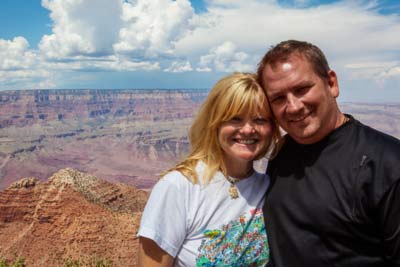 One of the most lucrative and fulfilling ways we make money on ThePlanetD is brand ambassadors. An ambassadorship is much more than just writing content for a blog or receiving free gear. Too many bloggers and brands are throwing that word around these days, but as brand ambassadors, it is a very involved and collaborative partnership. We worked with American Express for 2 years before we became full Brand Ambassadors.
One of the most lucrative and fulfilling ways we make money on ThePlanetD is brand ambassadors. An ambassadorship is much more than just writing content for a blog or receiving free gear. Too many bloggers and brands are throwing that word around these days, but as brand ambassadors, it is a very involved and collaborative partnership. We worked with American Express for 2 years before we became full Brand Ambassadors.
As ambassadors, we do media and event appearances, we are showcased in traditional media and we use the product exclusively. We are briefed on the values and goals of each company we work with and have regular meetings to discuss upcoming advertising initiatives and how they can be incorporated with ThePlanetD brand.
An ambassador is identified with the company they work with. Our readers and followers know that we have worked with Expedia.com and AmexCanada for years. We have become aligned with these brands just as Halle Berry is identified with Revlon makeup or Ellen is known as a Cover Girl. With the ambassadorships that we take on, we make sure that the brand aligns with our core values and in turn the brand will get the best possible coverage from ThePlanetD.
We have started to work with TravelSmith and TripIt this year and each company is very much in line with our niche, demographic and target market. When we work with our four core brands, we are exclusive to them and sign with them for long-term contracts. We hope and plan on working with them for a very long time and each year we evaluate what worked and what didn’t with the clients to make plans on what to improve and what to change in the next phase of the partnership.
Brand ambassadorships are mutually beneficial and completely transparent. They take a lot of work and time, but they are the most rewarding experience when you partner with the right company.
Dave and Deb are well-known travel personalities in both online and mainstream media. Their highly acclaimed website, The Planet D, won the 2014 Gold Medal for Best Travel Blog by the Society of American Travel Writers. They’ve travelled to more than 100 countries on all 7 continents. As spokespeople and international ambassadors they’ve worked with some of the world’s top travel brands and have been featured in major Canadian and international media outlets such as The Today Show, National Geographic, Mashable, BBC, and Yahoo Travel
Podcast Sponsorship / Advertising
I have been podcasting for 10 years and the number of companies who are interested in or even seeking out podcast sponsorship is growing. Granted it has grown much slower over that time than I predicted but it has grown. I have found that a travel podcast can command as high as a $50 CPM (cost per thousand downloads). That’s the good news. The bad news is that since many podcasts continue to get downloaded for years, trying to figure out which number to use for downloads is not as straight forward. I usually use how many downloads an episode will get in the first 2 months.
Some advertising will work better in podcasts than others. Specifically Edison Research has found that podcast are best for brand awareness. They are not as strong for direct or immediate action advertising, “click here now…”.
The consumption of a podcast happens on the listeners timeline and they are typically listening in the car, at the gym, or while they walk the dog. But they are better for brand awareness than any other form of advertising studied (tv, public radio, newspapers, magazines, etc) due to the personal bond that is created by the medium. For that reason host read ads tend to be more effective. (See Edison’s most recent stats on podcast listeners). Think about ads that will still be valuable when someone is listening to your episode 1 month or even 10 years later.
We have gotten to the point where someone in the U.S. who makes over $100,000 a year is more likely than not to have listened to a podcast and a large number of podcast listeners are listening instead of consuming other media so if you want to reach them you may need to advertise in the podcasts they love. Podcasting is not yet as strong outside of English speaking countries, but that will likely change as the smart phone is a podcaster’s best friend.
As data plans allow for large file downloads and consumers discover this addictive medium, listenership will continue to grow – as will sponsorship.
Chris Christensen
Amateur Traveler podcast – Lowell Thomas Award, Travel+Leisure SMITTY Award
This Week in Travel podcast – Gold Medal winner in Broadcast – North American Travel Journalism Association
Indirect Monetization for Travel Blogs
Indirect monetization is income you make as a result of having a travel blog. Using your blog as a portfolio to get off-site work. Freelancing is a good example of this, as is starting a separate company and using your blog to funnel customers to that company. You blog doesn’t “make” money but it is a key contributor to your success.
Freelance Writing
Use your writing on your blog as a stepping stone for both learning to be, and promoting yourself as a freelance writer. The specific dollar value you can earn varies wildly between publications, but for certain pieces you can make a large one-off payment. Securing regular contract work may require a higher number of articles to be written per week, but can help ensure you have a steady wage.
To break into the freelance travel writing market be sure to aim at entry-level publications to help build up your portfolio. Writing for websites such as Thought Catalog (no pay) and Matador Network ($20-40) can help give you a great foundation for reaching out to larger outlets. There is nothing wrong with starting small and writing for free to get your foot in the door. Remember, the New York Times or BBC will very rarely commission a new author for a story if that person has never worked with editors before.
One downside to freelancing is that it is dependent on your pitching skills, how many stories you can sell, your access to internet, how quickly you can write and what your style is. You don’t necessarily have to be the next Don George to become a freelance travel writer. You just need to be able to match a certain publication’s style. This is another reason to reach out to media outlets that pay lower fees, as they will be more likely to give you regular work. Selling a $2000 print article for an airline magazine may be a huge payday, but one piece could take up to six months to be processed.
Taking that step from personal travel blogger to freelance travel writer may seem difficult to obtain, but with the right skills and story ideas it can be a fun and financially sustainable profession.
NOMADasaurus – an adventure travel blog by Alesha Bradford (Lesh), and award-winning writer, Jarryd Salem (Jazza)
Start a Tour Business linked to your travel skills

Amanda in Morocco. Photo credit: to Heidi of Aromasnsabores.com
My husband and I had moved to Morocco and I was blogging regularly about Morocco, providing insight to our life and our move. One day while we were sitting at a cafe watching tourists go into sub-par restaurants the idea came to me to provide an experience for them to taste authentic Moroccan food. We didn’t have any money to really start a business like a restaurant so we thought of something that had low start-up costs.
Our food tour was born!
What we did have was time and a unique set of characteristics. My husband grew up in Marrakech and knew how things worked here. I already had built a captive audience online and have a background in business. We spent a few months finding great places to take our guests and as soon as things were perfected we built a simple website and it took off! Within 36 hours we had 4 reservations and it hasn’t slowed down since.
This worked for us because we are not nomadic, we are based in Marrakech. It also worked because we focused on an area that we have an expertise – food. For others who want to do something similar my advice is to find a hole in the market that you can fill. Start small and don’t invest heavily until you know it will work. Then be prepared to work really hard!
Amanda Mouttaki blogs at MarocMama.com where she shares her global outlook on food and travel with out fear. She also owns MarrakechFoodTours.com where tourists can experience authentic Moroccan food on guided medina tours.
Travel Blogger to brand outreach management as a profitable business
When you are passionate about travel blogging understand the huge impact that blogs make on the lives of travellers, blogger outreach is pretty much a natural area to cross into.
When I started blogging 6 years back, blogging wasn’t taken seriously as a profession. There was a distinct lack of education about the value that a blogger can bring to destinations and brands. We needed more success stories ( still do) to prove to DMO’s and brands our worth. My blogger outreach career started with #Blogville, an idea that me, Melvin Boecher aka Traveldudes and Nicholas Montemaggi, the digital PR officer for Emilia Romagna Tourism board came up after a few too many beers at a conference called Buy Tourism Online in Florence, 3 years back.
Nicholas and Emilia Romagna Tourism Board had the same issue that most DMO’s and brands face when trying to work with bloggers. Who are the real professional travel bloggers who can help promote the message of our destination? As a professional travel blogger, you are in a pretty good position to know who is really producing great content and is engaging their readers.
So, for us it wasn’t just a matter of reaching out to the bloggers within the target niches for Emilia Romagna. We were looking at their quality of engagement on their social channels, their writing style plus also very importantly were they nice people? There are a lot or fragile egos and divas in the blogging world so when it comes to blogger outreach and putting together a campaign for a brand, you want someone flexible, easy to work with and is ready to hit the ground running.
Blogger outreach is a lot like dating- you have to match the personality of the blogger to that of the destination. You have to educate the destinations and create the right conditions for the bloggers to work their magic. Sometimes you have to come up with a creative idea. ( Must Love Festivals m annual storytelling project about cool, lesser known festivals is an example of a nice idea , executed with the aid of a team of professional bloggers.)
You have to have set deliverables for the campaign to know what success will look like. In short, blogger outreach cannot be seen just in isolation as a specialist discipline sometimes. You need to have a 360 degree approach: understanding marketing, understand strategy, understand the customer journey cycle , understand the power of good ideas and what it can do to create conversations- see where blogger outreach fits within this. If you can understand this, then you are on the path to blogger outreach success.
Identify a key niche, maybe your own niche. See what campaigns the brands within the niche are developing. Listen and learn from the brands, the DMO’s at conferences. Then come up with the ideas and then collaborate with trusted bloggers to execute the idea. Lather, rinse and repeat. See what works. Learn from your mistakes. Be honest to the client. Try and always over deliver.
#Blogville was a huge success and became a model for blogger outreach between destinations and influencers. It was the platform for a myriad of successful blogger led campaigns.
The financial rewards are huge in blogger outreach but it requires a serious investment of personal time. I love my life as professional travel blogger but it is great to be on the other side of the spectrum and seeing the travel industry through a different lens. I have just joined a destination marketing agency called Toposophy and working with a bunch of amazing travel professionals from across the spectrum.
Collaborate or die. That’s what I’ve been doing with iAmbassador, Captivate. You can create your own blogger collective. Focus on the niches.
Together we can create amazing things. That’s the key lesson about blogger outreach I’d like you to remember.
Kash Bhattacharya has been travelling in style on a budget for the last 6 years, blogging about my adventures at the BudgetTraveller. Featured by the New York Times, Guardian, Vanity Fair & National Geographic, Kash is also a blogger outreach expert for the Destination Marketing Agency, Toposophy.
‘As one of the few travel bloggers who’s managed to make their site pay, he’s one to watch.’ The Guardian Travel Blogger, Social Media professional, iAmbassador and Visit Britain Superblogger. Featured in the New York Times Guardian , Cosmopolitan , Vanity Fair TNT Magazine
I blog at BudgetTraveller.org and founder of Film Traveller Cote D’Azur
Twitter: twitter.com/BudgetTraveller
Twitter Chats
Making money through Twitter chats is challenging for many bloggers because they view it as “easy work” that requires little effort beyond what they are doing already anyway, which is chatting online. Brands often view it in this way as well, which is why so many will reach out to bloggers who have a strong following, reach, and online community to simply “join in” on the party.
The easiest way to identify a need for payment is when you are being specifically requested to promote a message or campaign, often with a pre-assigned hashtag for an allotted period of time. The demand of your time, focus, voice, and influence merits a payment and you should have a base payment that is standard across the board, increasing with requests for add-ons (i.e. manage giveaways, etc.).
There are two roles in Twitter chats: Hosts are often in charge of organizing questions, messaging, etc, as well as recruiting co-hosts and in effect working as the direct liaison for the brand. Co-hosts are important as well because their presence is often due to their influence and the weight of the same in helping to spread messaging to a wider audience in the space. In fact, co-hosts are the crucial link to success because they are the ones who bring the people to the party and keep it going.
There is a difference between joining in on a chat and working one. Understanding this difference helps you to identify when there is an opportunity for payment. Understanding your impact in such chats (your reach and message influence) helps in negotiating your fee. Respecting your audience and community is imperative as well, therefore limiting the amount of promotional/marketing you do on Twitter as well as maintaining consistency in what your brand, is a crucial balance.
If you aren’t sure what to charge then participate in Twitter chats and keep track of your metrics (via Twitter Analytics, Hootsuite, Tweetreach) and learn to use these to negotiate your fees, which in my opinion, should never be less than $250 for minimal presence and as a starting base. Payment should never come in the form of a gift card or promise of exposure, none of which have ever helped to feed my family in the past or paid my mortgage.
Carol Cain blogs at GirlGoneTravel.com and left a life in PR to blog, travel and spend more time with her family.
Social Media Manager for travel brands
 As a social media manager (a Pinterest manager alone in my case, I don’t believe you can be an expert on all platforms), I help companies and other bloggers with their social media strategy, the design and/or optimalisation of content and planning and scheduling that content to get the most engagement from their audience and traffic to their websites.
As a social media manager (a Pinterest manager alone in my case, I don’t believe you can be an expert on all platforms), I help companies and other bloggers with their social media strategy, the design and/or optimalisation of content and planning and scheduling that content to get the most engagement from their audience and traffic to their websites.
I’ve chosen to only work only with travel brands, because I noticed that it’s much easier to curate and create content in an industry you know a lot about yourself. Being a travel blogger, I have easy access to the online travel community, know a lot about the different niche topics, can monitor competitors easier, use my own influence on the platform in advantage of my clients and set up possible collaborations with others quicker.
For anyone looking to get started as a social media manager, I would advice not to underestimate the amount of time it takes to set up and especially maintain an account and start early with thinking about possible ways to outsource parts of your work.
Nienke Krook writes as ‘The Travel Tester‘ about travel and self-development and has over half a million followers on Pinterest, where she co-hosts the weekly ‘Mappin Monday’ travel community.
Expert Travel Blogger turned independent travel agent
A long story short – off the back of the success of my travel blog BackpackerBanter.com I launched a side business to help monetise the traffic I was getting. Some people sell photo prints, e-books, yoga retreats… I decided to bite into a big project and launched my own online travel agency, Epic Gap Year.
I had basically got to the point where I had worked with heaps of suppliers worldwide, mainly within the surf and dive industry.
Because of this I was getting an increasing amount of emails about “how do I learn to dive”, “how do you become a surf instructor”, “where can I combine this and this” and I was simply passing them onto the people I personally recommended.
Then it dawned on me – I had all these amazing hot leads and heaps of contacts I could utilise, so why was I simply passing them on free of charge?!
So I spoke to a few suppliers about drawing up an agency agreement and I was stoked at the response and how keen people were to get on board. So over the next 12 months sourced some new suppliers, built a site, figured out all the little stuff and launched EpicGapYear.com with a solid selection of Surf, Dive, Snow and Adventure Experiences.
For me the key point was that these were all companies and experiences I personally recommended and have tested myself (apart from a few snow experiences) and I can carry across the knowledge and trust that my blog has built up.
And I’m stoked to say it’s growing nicely, with a team of ambassadors, new experiences and customers from all over the globe. Better still I’ve opted to be online only, so I can run it all from anywhere in the world as long as I have wifi!
I guess the key on building a side business to your travel blog is figuring out what assets are at your disposal and why people are visiting your site…and how you can combine the two into something new that is marketable.
The more organic and natural an extension of your blog this is the better it’ll pan out for you and the easier it’ll be to get off the ground.
If people are coming to you for al things yoga why not run your own retreats (like Camille from This American Girl has done), or how about something a bit simpler like a travel planning service or even selling some of your artwork?
Get creative and don’t be afraid to aim big – you already have people wandering around your shop, you just have to figure out what to stock the shelves with!
Chris Stevens, Backpackerbanter.com
Chris is a travel blogger, surfer, photographer and ocean lover originally from Devon in the UK. Since quitting his job in 2009 he has been inspiring others to travel the world via his blog BackpackerBanter.com and online travel agency EpicGapYear.com
Take Action Today!
I hope this list has inspired you to realise that becoming a successful travel blogger is all about having a business strategy. Simply blogging about the world is not enough. You need to picture your blog as a business. To think about what products and services people really want and how you can provide great and inspiring travel content that leads them towards a purchase, while also providing value in itself.
So, how will you monetize your blog?
These 18 methods are not the only ones. Plus, each method takes a lot more than just a few tips in order to implement and execute in a way that will make you a full time income.
If you are ready to learn more about how each method works and get the true depth of understanding you need to finally make more money or a full time income as a travel blogger, you should pre-register FREE for the Travel Blogger Monetization Course
We brought together 15+ experts – including some of the ones above – for a 5 day virtual summit in April of 2016 – and it was a hit! It was so informative that we decided to re-release the summit as a dedicated Travel Blogging Monetization Course
If you want to learn how to turn your travel blog into a thriving business, and finally travel the world off your blogging income, then check it out. Plus, if you Pre-register right now you can get access to monetization training videos instantly – for FREE!
Videos include:
* How to Get Paid Every Time You Post On Your Blog
* 5 Actionable steps to starting (or fixing) your blog for profit potential
* How to Know You’re Qualified to Charge For Content Services (Photos, Blog Posts etc.)
and more.…
Register now, Free:
You’ll Get Access To:
- Free Members Area with Monetization tips and resources – First 10 Lessons Free
- Updates about the monetization course, upcoming virtual summits and future events
- Occasional offers and discounts for products relating to travel blogging and online income
Still not sure? Take a look at the official homepage for more details. But don’t leave it too long, enrollments are only open for a short time each year.
Love this post? Why not pin it on your favourite blogging board on Pinterest?
——–
Questions and comments about the summit or about travel blog monetization?
Leave them below.
——–
Disclaimer: The above article contains affiliate links for Better life for half the price. A product we love and recommend.


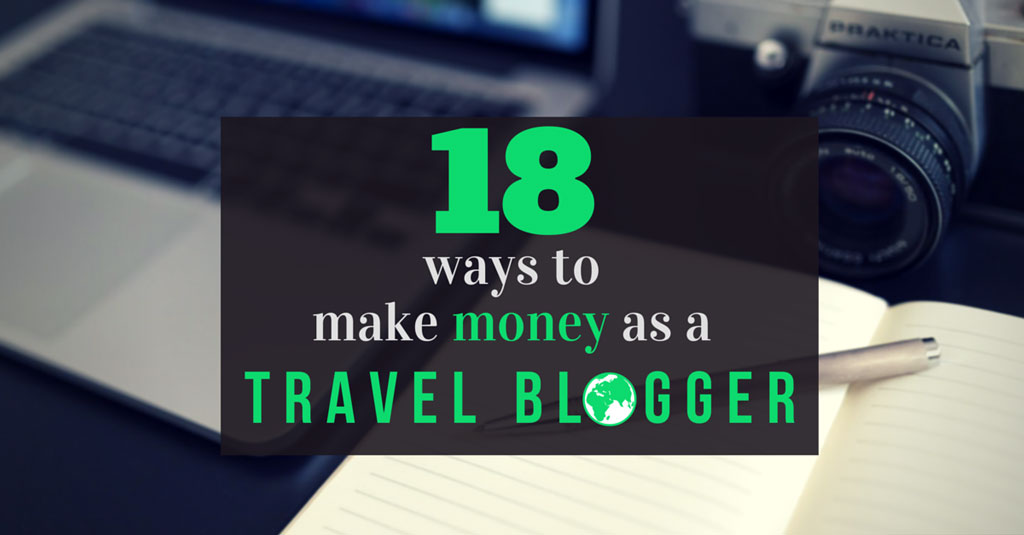
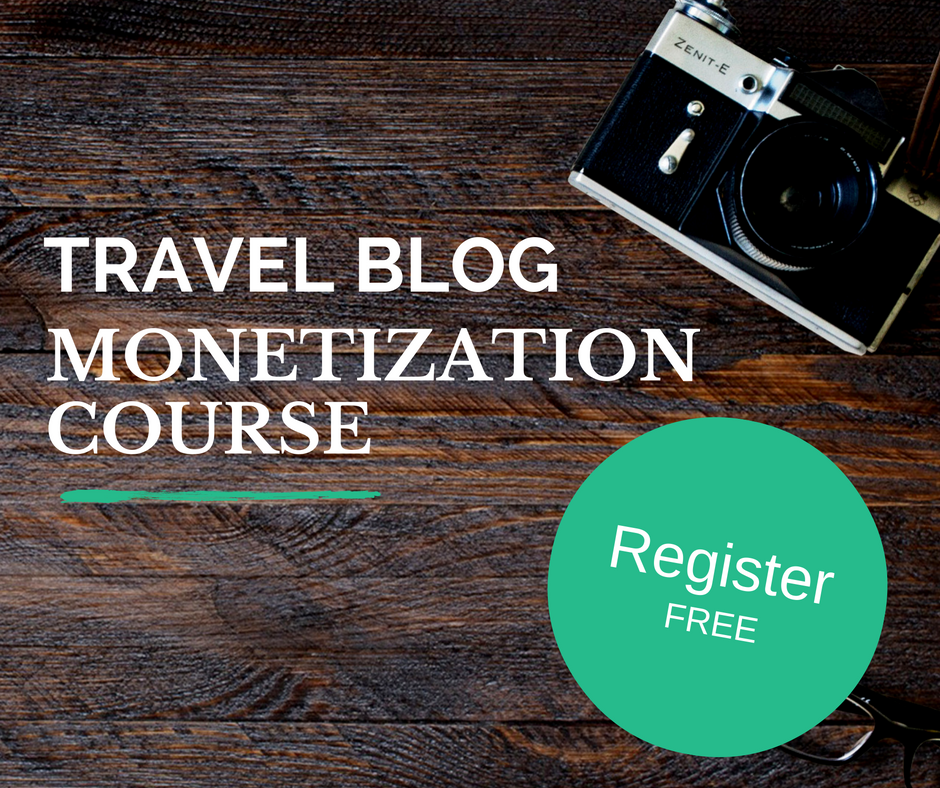

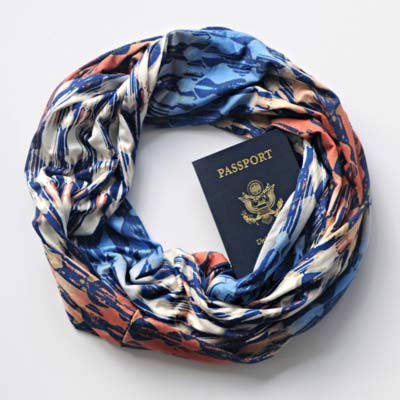
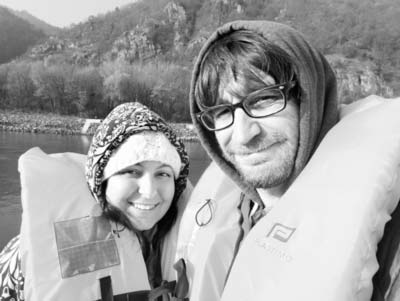

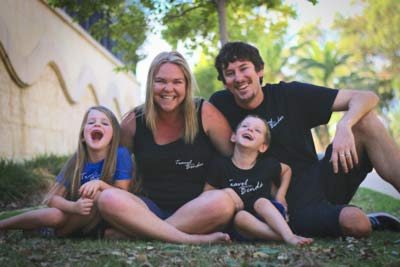
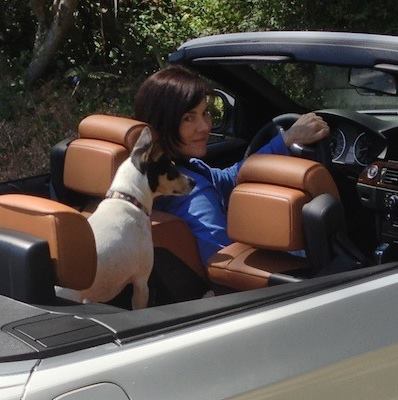
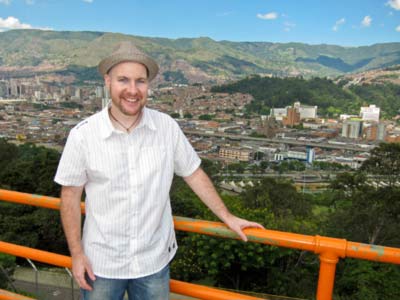

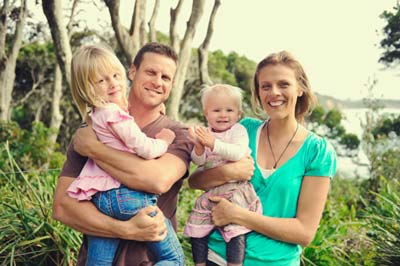

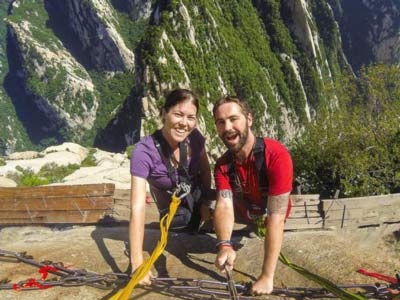

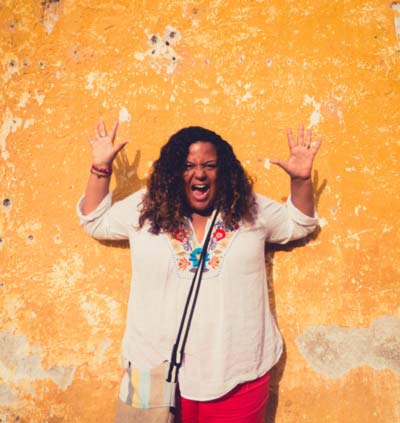
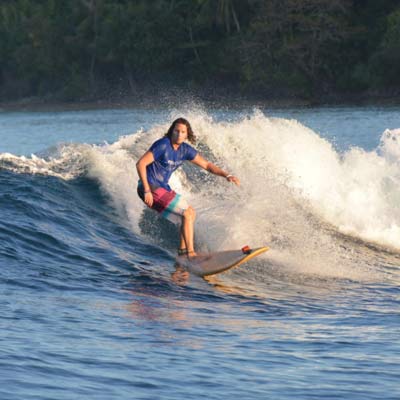
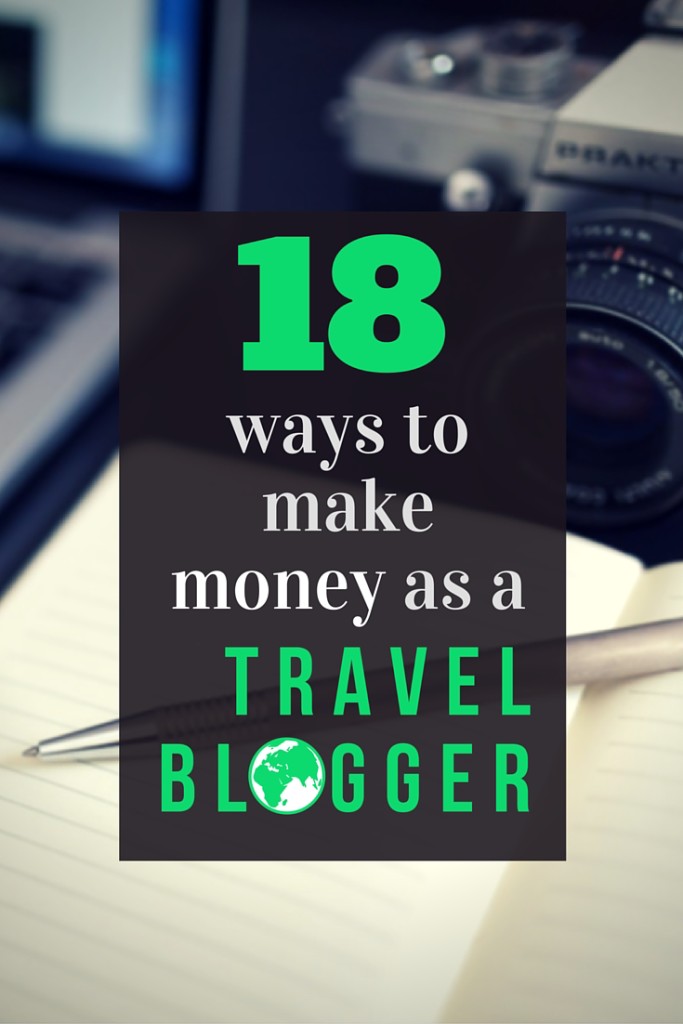
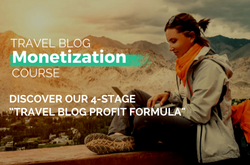
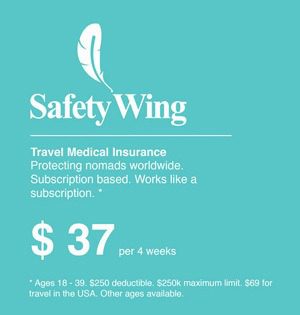

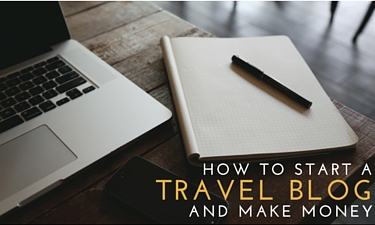

Great article! My partner and I have recently started a blog, and haven’t had the chance to fully commit to monetization; however, we are determined to start and gain more followers by summer.
I just signed up for the summit, can’t wait to hear more about monetization for blogs!
For anyone who’s focusing on one location, there’s another overlooked opportunity to make money. Transport. Everyone has to get to the location.
My site, about an island in Thailand, ( which isn’t one of the most well known) makes far more than you’d imagine from arranging private transfers & minibus tickets. And all it involves is answering emails.
Very insightful article. Helps me narrow down the monetisation strategies that would be a fit for me.
Thank you for these monetization methods. I’m blogging for travel guide Suriname and methods will make a difference.
Love this article! It is clear and concise. Definitely going to implement some of the strategies listed here.
Thank you for sharing. I will follow your step to improve my website